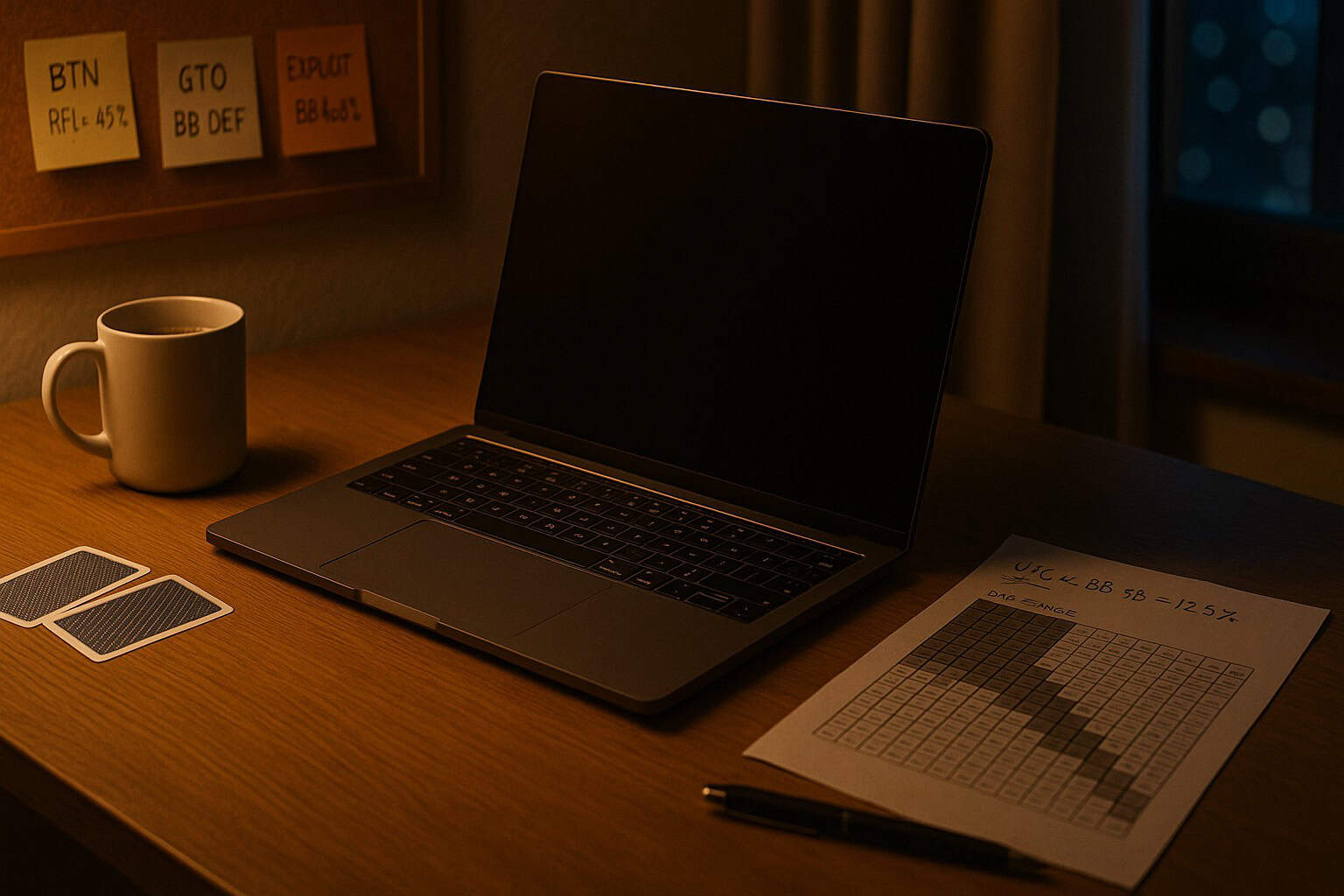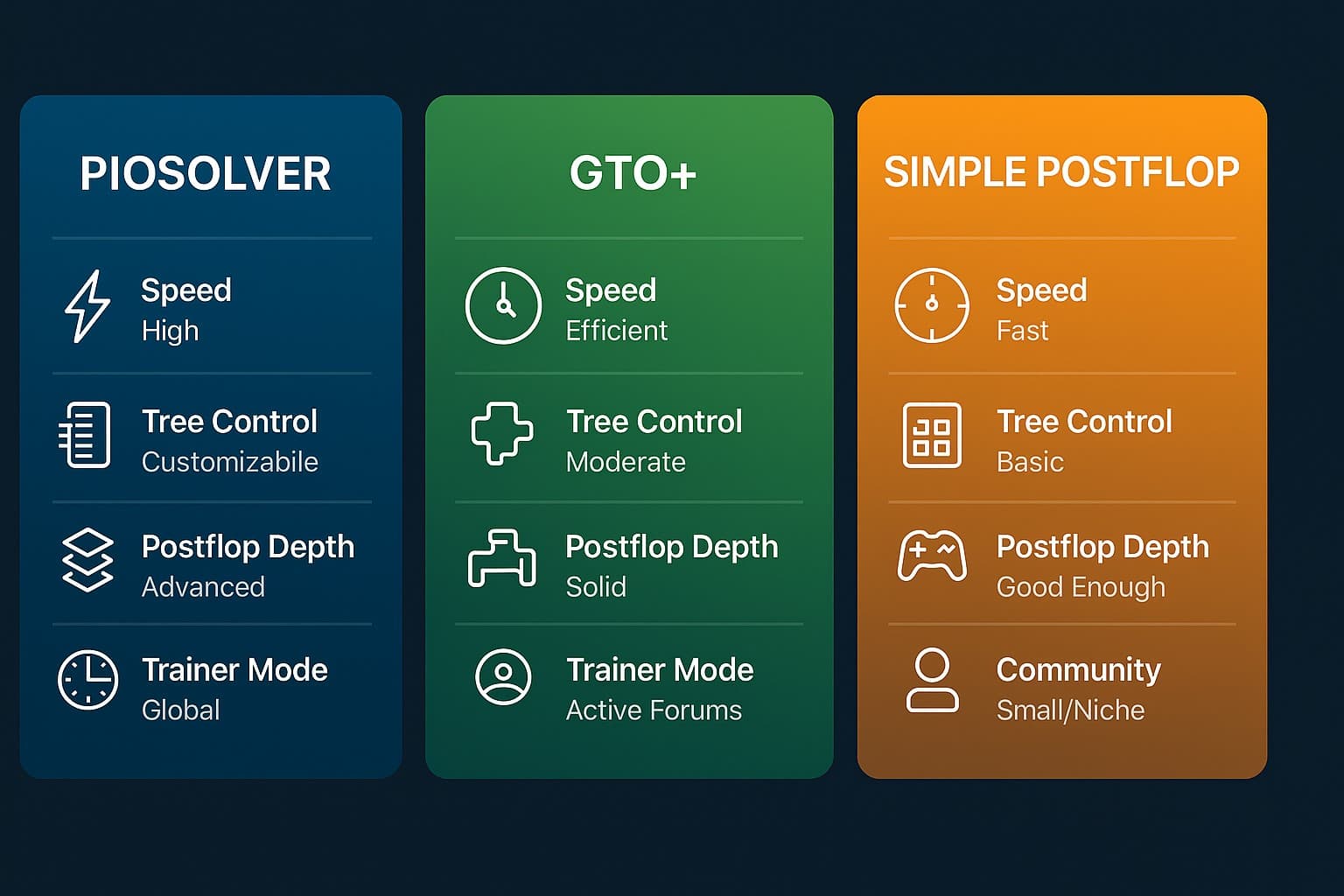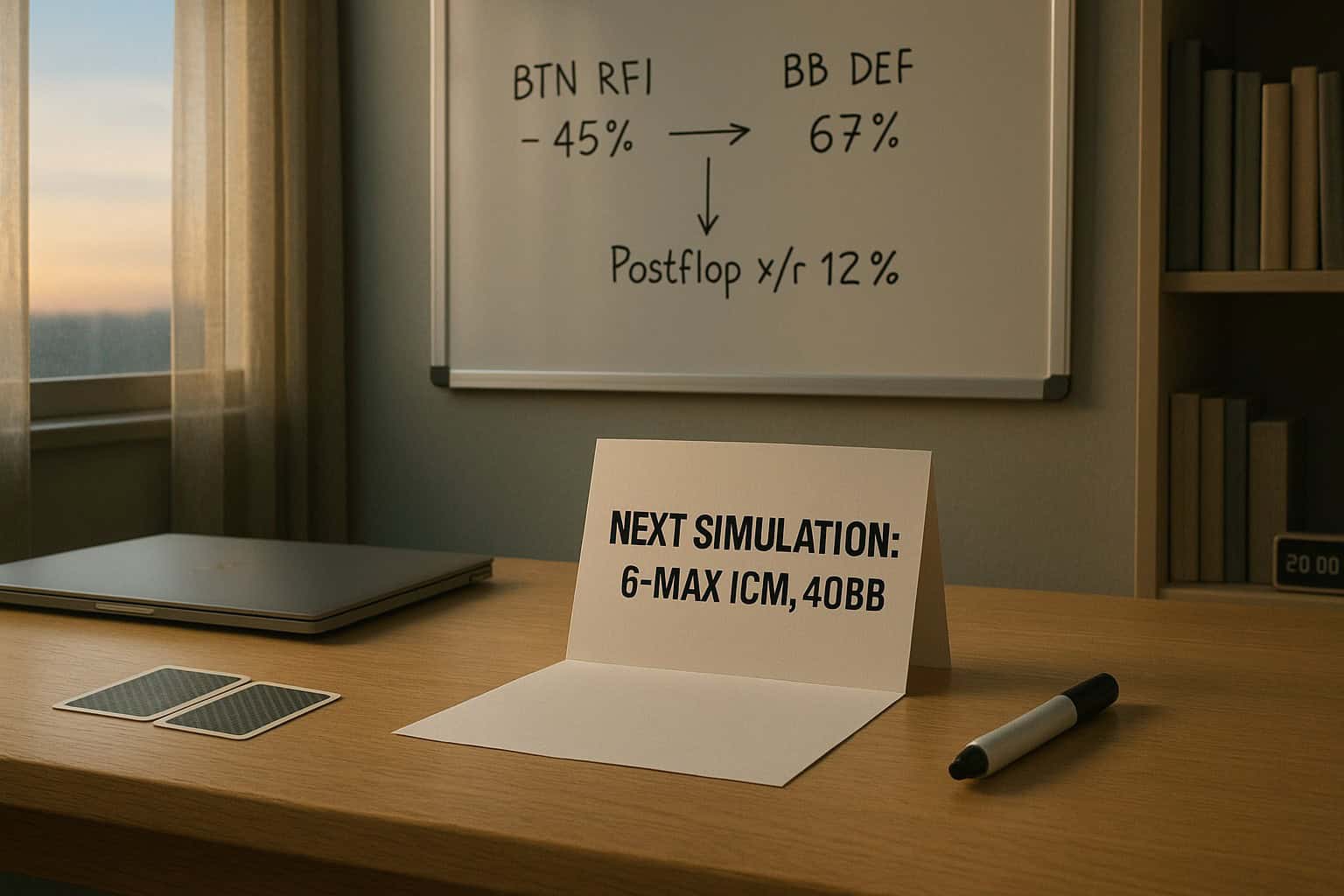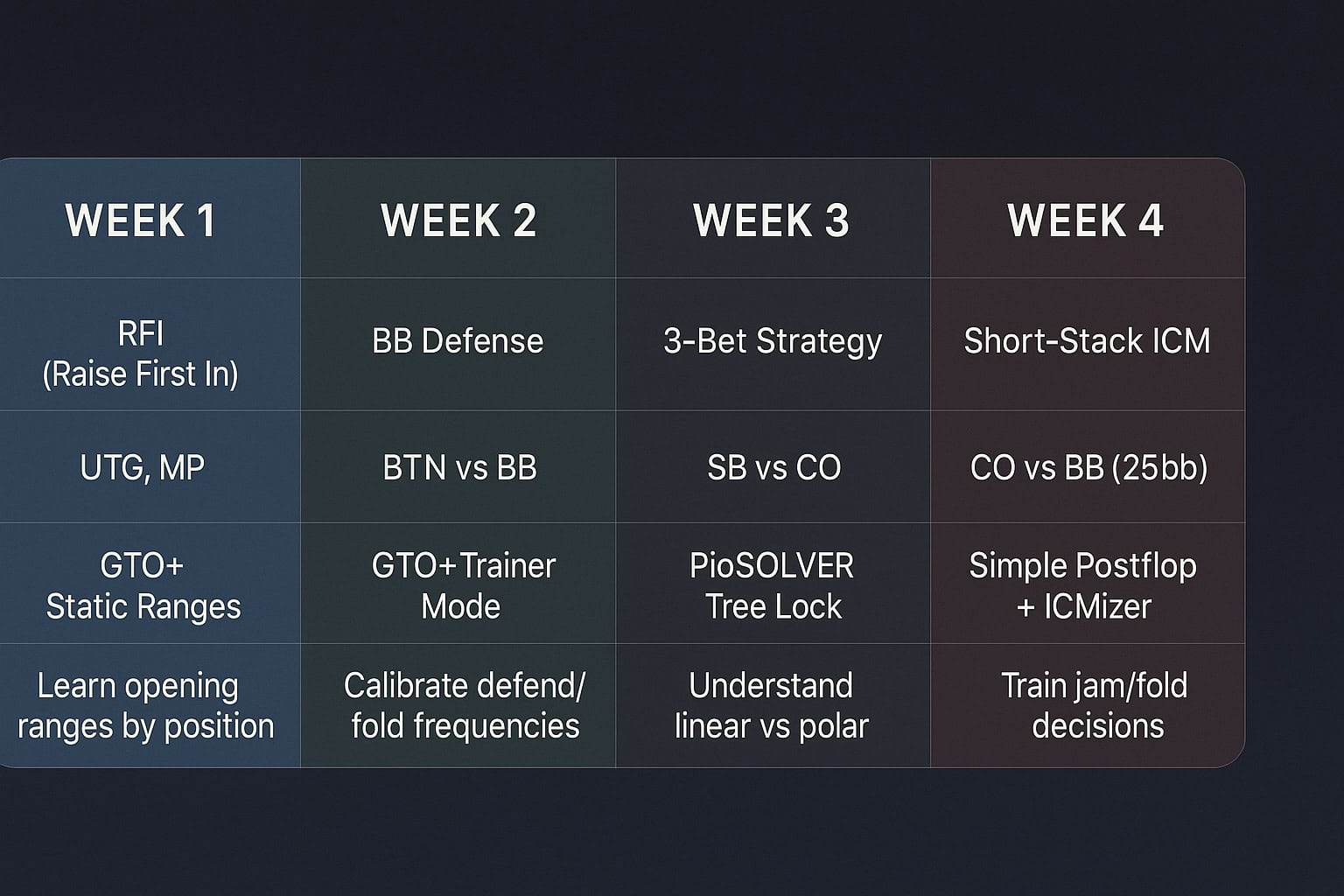
Training Preflop Ranges with Solver Apps
It’s one of the simplest decisions in poker — whether to play your hand or fold. Yet preflop mistakes compound fast, and by the time you get to the river, it’s too late. In 2025, there’s no excuse for playing without structured preflop ranges. And thanks to modern solver apps, you can train them with precision. That’s why training preflop ranges with solver apps is now the gold standard for players in 2025
From GTO+ to PioSOLVER to Simple Postflop, solvers are no longer elite tools for nosebleed pros — they’ve become accessible, intuitive, and game-changing for players at every level. But while solvers are powerful, they don’t teach you by themselves. You have to train with them — actively, deliberately, and consistently.
This guide will show you exactly how.
Why Training Preflop Ranges Still Matters in a Solver App World
It might seem strange to study preflop at all. Don’t solvers just solve the game? Isn’t everything already figured out?
Not quite.
Solvers output equilibrium strategies — but your job is to internalize those ranges and apply them under pressure. If you want to:
- Defend your blinds more profitably,
- Avoid over-folding to 3-bets,
- Punish limpers or tight regs,
- Or adjust to short-stack dynamics in tournaments…
…you still need to own your preflop strategy.
Think of solvers as coaches, not oracles.

What Makes a Good Solver App for Training Preflop Ranges?аthe big three
All solvers are not created equal. Some are better for postflop analysis, others for pure range drilling. If your goal is preflop mastery, here’s what to look for:
- Customizable preflop trees: You want to control node sizes, position matchups, and open/defend/3-bet sizing.
- Speed: Preflop solving is computationally heavy — apps that precompute common trees save massive time.
- Visualization: A readable matrix view is essential to learning frequencies and combos.
- Training mode: The ability to quiz yourself or practice spots is what turns data into intuition.
- ICM support: Crucial for MTT players navigating final tables.
Now let’s look at the big three.
Comparing the Big Three: PioSOLVER, GTO+, and Simple Postflop
PioSOLVER is the OG — incredibly powerful and deeply customizable. It supports multiway solving, full tree customization, and nuanced node locking. But it’s expensive and has a steep learning curve.
GTO+ is more user-friendly and budget-friendly. It’s ideal for preflop trees and trainer integration. It may lack the raw horsepower of Pio, but for most preflop work, it’s more than enough.
Simple Postflop bridges the gap. It’s fast, intuitive, and supports both preflop and postflop solving with a clean UI. However, it doesn’t quite match the depth of node control in Pio.
If you’re new, start with GTO+. If you want total control, invest in Pio. If you’re somewhere in between, Simple Postflop will feel like home.

Understanding Range Grids: What Those Colors Really Mean
Let’s demystify the matrix.
When a solver shows a range grid, you’re seeing every hand in the deck represented by position and action frequency. For example:
- A solid green square means that hand is always taken with that action.
- A 60/40 color blend shows mixed strategy — say, 60% raise, 40% fold.
- Faded colors mean low-frequency plays, often used to balance or misweight counter-strategies.
These matrices are not set in stone — they reflect equilibrium vs. a balanced opponent. Against real-world pools, exploitative deviations often outperform GTO.
Still, starting with equilibrium helps prevent leaks like:
- Over-folding weak suited hands in the BB
- Over-calling low off-suits from the CO
- Misplaying pocket pairs out of position
Memorizing is optional. Understanding patterns is key.
How to Train Preflop Ranges with Solver Apps and Trainers
This is where solver apps for training preflop ranges become more than spreadsheets.
Trainer modes let you play against the GTO strategy in real time. You select a spot (say, SB vs BB 3-bet pot), then play hands, receive feedback, and improve.
Good trainers show you:
- Your selected action vs. GTO recommendation
- EV loss per decision
- Cumulative score and progress chart
- Suggested corrections
Best practices when training:
- Focus on one spot at a time: e.g., BTN vs BB open
- Set time blocks (20–30 minutes daily beats marathon sessions)
- Record EV loss trends (are you overfolding or overbluffing?)
- Occasionally switch to exploit mode (see how GTO shifts when you lock opponent errors)
Over time, you’ll begin to “feel” optimal play. That’s what separates bot memorization from real intuition.
Create a personalized preflop training program.
Here’s a simple 4-week training cycle for anyone serious about improvement:
Week 1:
- Emphasis: RFI (Raise First In)
- Positions: UTG, MP
- Methods: Fixed GTO distributions
- Goals: Understand tightness vs. early position stack depths
Week 2:
- Focus: BB defense
- Positions: Button opens vs. Big Blind
- Tools: Training modality with instant feedback.
- Goals: Balance defend/fold frequencies vs different sizings
Week 3
- Focus: 3-bet ranges
- Positions: SB vs CO
- Tools: PioSOLVER locked tree explorer
- Goals: Learn linear vs. polar 3-bet strategy
Week 4:
- Focus: Short-stack ICM preflop
- Positions: CO vs BB (25bb)
- Tools: Simple Postflop + ICM calculator
- Practise setting and folding boundaries under pressure
Preflop Doesn’t Exist in a Vacuum
Here’s the twist: preflop strategy is only “optimal” if you play postflop properly.
You might 3-bet a hand 100% of the time preflop according to GTO. But if you over-cbet it on dry flops or miss your river check-raises, that same hand becomes a long-term loser.
Solvers show the starting point. Your in-game skill turns theory into profit.
That’s why smart preflop training always goes hand-in-hand with…
- Postflop range review
- Exploit studies based on pool leaks
- Mental game journaling to avoid emotional overrides
The ICM Factor: When Preflop Strategy Breaks
In tournaments, ICM ruins everything you thought you knew.
Hands you’d happily call or jam in cash games now become folds. Solver tools with ICM modules (like ICMIZER or Simple Postflop ICM) allow you to study these edge spots where payout jumps reshape the game tree.
When studying preflop ICM spots:
- Use exact payout structures
- Lock opponent ranges realistically
- Adjust for final table dynamics (stack depth relative to other stacks)
Even small EV leaks in these spots cost thousands in ROI over time.
Common Mistakes When Training Preflop Ranges with Solver Apps
Avoid these if you want to train smarter, not harder:
-
- Treating solver output as gospel — it’s a guide, not a script
- Ignoring mixed frequencies — simplification is fine, but don’t flatten nuance
- Skipping node configuration — garbage trees = garbage solutions
- Failing to link preflop to postflop — always examine downstream strategy
- Overtraining without review — track your accuracy and EV loss
Preflop work is about trendlines, not memorization. Don’t aim to “know” every combo — aim to understand why it’s played.
Looking Forward: Solvers Are Getting Smarter, So Should You
AI poker tools are evolving. Soon you’ll be able to:
- Train against AI that adapts to your tendencies
- Use range estimators in real time (legally, in trainer environments)
- Import live hand histories into GTO analysis systems on the fly
- Develop fully personalized preflop models based on your win rate, not theory
But even now, with the right approach, you can get more out of solver apps than 99% of players who own them.
Final Thought: Make Preflop Your Edge Again

The gap between theory and execution is where the money lives.
Train your ranges. Track your progress. Don’t just download charts — interact with them. Ask questions. Plug leaks. And remember:
In 2025, most players have access to solvers.
Only a few know how to use them well.
Be one of those few. Mastering training preflop ranges with solver apps is the simplest way to future-proof your edge.

